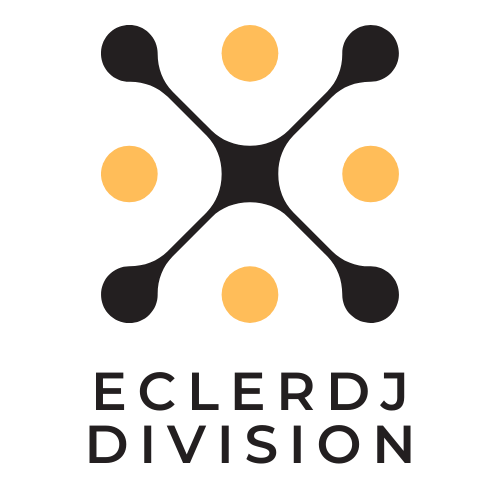Effective communication forms the backbone of modern healthcare delivery. It bridges the gap between medical professionals and patients, ensuring that vital health information is conveyed accurately and compassionately. In today’s complex healthcare landscape, adopting strategic communication approaches can significantly improve patient outcomes, enhance satisfaction, and reduce misunderstandings that might lead to treatment complications. Healthcare providers who master these communication techniques create environments where patients feel heard, respected, and empowered to participate in their own care journey.
Simplifying medical language for universal understanding
Medical terminology often creates unnecessary barriers between healthcare providers and patients. When clinicians use complex medical jargon, patients frequently leave consultations confused about their condition or treatment plan. Studies have shown that even well-educated patients struggle with medical terminology, which can lead to medication errors, missed appointments, and poor adherence to treatment regimens. Websites like https://www.comunicasalud.es/ provide valuable resources that demonstrate how health information can be presented in accessible formats that maintain accuracy while ensuring clarity.
Replacing jargon with everyday terms
Healthcare professionals must develop the skill of translating complex medical concepts into everyday language. Instead of telling a patient they have “myocardialinfarction,” saying “heartattack” makes the diagnosis immediately understandable. This translation doesn’t mean oversimplifying or patronising patients—rather, it ensures information is accessible to everyone regardless of their educational background or familiarity with medical terms. Patient-centred communication requires constantly assessing whether the language used resonates with the specific individual receiving care.
Creating accessible health information materials
Written health information materials require particular attention to accessibility. When developing patient leaflets, websites, or discharge instructions, healthcare organisations should involve actual users in the design process. Materials should employ plain language principles while maintaining clinical accuracy. For instance, instructions should be direct and action-oriented rather than passive or filled with unnecessarily complex terms. Considering factors like font size, contrast, and reading level ensures compliance with the Equality Act 2010 and makes information accessible to those with visual impairments or reading difficulties.
The art of active listening in healthcare settings
Communication in healthcare isn’t merely about transmitting information—it’s equally about receiving it through attentive listening. Active listening involves fully concentrating on what patients say, understanding their message, responding thoughtfully, and remembering key details. This fundamental skill helps healthcare providers gather accurate information for diagnosis while simultaneously building rapport and trust with patients.
Techniques for truly hearing patient concerns
Healthcare professionals can employ several techniques to enhance their listening skills. The BATHE technique (Background, Affect, Trouble, Handling, Empathy) provides a structured approach to understanding patients’ concerns beyond just physical symptoms. By asking open-ended questions about the background of their situation, how it affects them emotionally, what troubles them most, and how they’re handling it, providers gain comprehensive insight into patients’ experiences. Concluding with empathetic responses validates patients’ feelings and demonstrates genuine care.
Responding appropriately to verbal and non-verbal cues
Effective communication extends beyond words to include non-verbal elements like facial expressions, body language, and tone of voice. Healthcare providers must become adept at noticing these subtle cues, which often reveal unspoken concerns or confusion. For example, a patient who nods in agreement but appears puzzled may not fully understand their treatment plan. In these situations, healthcare professionals should check understanding by asking patients to explain information in their own words rather than simply asking if they understand.
Building trust through empathetic communication
Trust forms the foundation of effective healthcare relationships. Patients who trust their healthcare providers are more likely to disclose sensitive information, adhere to treatment recommendations, and experience better health outcomes. Empathetic communication—demonstrating a genuine understanding of and concern for patients’ experiences—is crucial for establishing this trust.
Demonstrating genuine care in patient interactions
Small gestures can powerfully demonstrate care in healthcare settings. Making eye contact, sitting down during consultations rather than standing, and remembering personal details from previous visits all signal to patients that they are valued as individuals rather than just cases to be processed. These approaches align with the principles of Making Every Contact Count, an approach that views every interaction as an opportunity to improve health and wellbeing.
Managing difficult conversations with sensitivity
Healthcare inevitably involves difficult conversations about serious diagnoses, end-of-life care, or treatment complications. Approaching these discussions with sensitivity requires preparation, appropriate environment selection, and careful attention to language. Healthcare providers should create private spaces for these conversations, allow adequate time, and use clear but compassionate language. Shared decision-making becomes particularly important in these moments, ensuring patients understand their options and can participate meaningfully in treatment decisions.
Tailoring health messages to diverse audiences
One-size-fits-all communication fails to meet the needs of diverse patient populations. Effective healthcare communication requires adapting messages based on numerous factors including age, cultural background, health literacy level, and personal preferences. This personalised approach ensures information reaches patients in ways they can understand and act upon.

Assessing health literacy levels before communication
Health literacy—the ability to obtain, process, and understand basic health information—varies widely among patients. Before providing detailed information, healthcare providers should assess patients’ health literacy levels through informal conversation or standardised tools. This assessment allows for tailoring the complexity and depth of information. For patients with lower health literacy, using visual aids, simplified language, and teach-back methods helps ensure understanding and reduces health inequalities.
Adjusting complexity based on patient needs
Healthcare providers must become skilled at modulating the complexity of information based on individual patient needs. For older patients, this might mean providing information in smaller chunks with frequent checks for understanding. For those with extensive medical knowledge, more technical details might be appropriate. The goal is to provide information that is neither overwhelming nor insufficient for the specific individual receiving care.
Leveraging multiple communication channels effectively
Modern healthcare communication extends beyond face-to-face interactions to include written materials, digital platforms, visual aids, and virtual consultations. Each channel offers distinct advantages and limitations that healthcare providers must understand to communicate effectively across various situations.
Integrating visual aids to enhance understanding
Visual elements like diagrams, models, and videos often clarify complex medical concepts more effectively than words alone. For example, a simple drawing can help patients understand anatomical relationships or surgical procedures. These visual aids are particularly valuable when explaining treatment options as part of the informed consent process, helping patients truly understand the risks and benefits necessary for genuine shared decision-making.
Selecting appropriate communication mediums for different situations
The medium should match the message and the needs of the recipient. While virtual consultations offer convenience for routine follow-ups, they may be inappropriate for delivering serious diagnoses where in-person support is beneficial. Similarly, Patient Initiated Follow Up pathways allow patients to book appointments when needed but require clear explanation of when and how to seek care. Healthcare providers must thoughtfully select communication channels based on the sensitivity of information, complexity of the message, and patient preferences.
Navigating cultural diversity in healthcare communication
Cultural factors significantly influence how health information is perceived, processed, and acted upon. As healthcare settings serve increasingly diverse populations, cultural competence has become an essential communication skill for all providers.
Recognising cultural influences on health beliefs
Different cultures maintain distinct beliefs about health, illness, treatment, and the appropriate roles of patients and providers. These beliefs affect everything from symptom reporting to treatment adherence. Culturally competent healthcare providers take time to understand these perspectives rather than dismissing them as non-compliance or ignorance. This understanding creates space for more effective communication that respects patients’ worldviews while providing evidence-based care.
Adapting communication styles across cultural contexts
Communication preferences vary across cultures, including differences in directness, formality, and the role of family in healthcare decisions. Some cultures expect authoritative guidance from healthcare providers, while others prefer collaborative approaches. Adapting to these preferences requires flexibility and ongoing education about cultural norms. When language barriers exist, professional interpreters rather than family members should be engaged to ensure accurate and confidential communication.
Establishing feedback mechanisms for continuous improvement
Even skilled communicators benefit from regular feedback that highlights strengths and areas for improvement. Healthcare organisations should implement systematic approaches to gathering, analysing, and acting upon communication-related feedback.
Creating safe spaces for patient feedback
Patients often hesitate to provide honest feedback about communication experiences, fearing it might negatively affect their care. Creating multiple, accessible feedback channels—including anonymous options—encourages more candid responses. When patients miss appointments, reaching out to understand why can provide valuable insights into communication breakdowns and opportunities to provide better support for future appointments.
Using communication audits to identify gaps
Regular audits of communication practices help identify systemic issues that individual feedback might miss. These audits might include reviewing written materials for readability, observing provider-patient interactions, or evaluating handover protocols between healthcare team members. The findings from these audits should inform targeted improvement initiatives, educational programmes, and policy changes aimed at enhancing communication throughout the organisation.
Fostering transparent team communication
Effective patient care depends not only on provider-patient communication but also on clear communication among healthcare team members. Breakdowns in team communication contribute to medical errors, reduced efficiency, and staff burnout.
Implementing effective handover protocols
Patient handovers—when responsibility transfers between providers or departments—represent particularly vulnerable moments for communication failures. Structured handover protocols ensure that critical information isn’t lost during transitions. These protocols should address not only medical details but also patient preferences, cultural considerations, and family involvement that might affect care planning.
Creating psychological safety within healthcare teams
Healthcare leadership plays a crucial role in establishing environments where team members feel safe to speak up about concerns, ask questions, and admit mistakes without fear of punishment. This psychological safety enables the transparent communication necessary for high-quality care and continuous improvement. The Healthcare Leadership Model provides valuable guidance for developing leadership approaches that support such environments, even for those without formal leadership titles.

